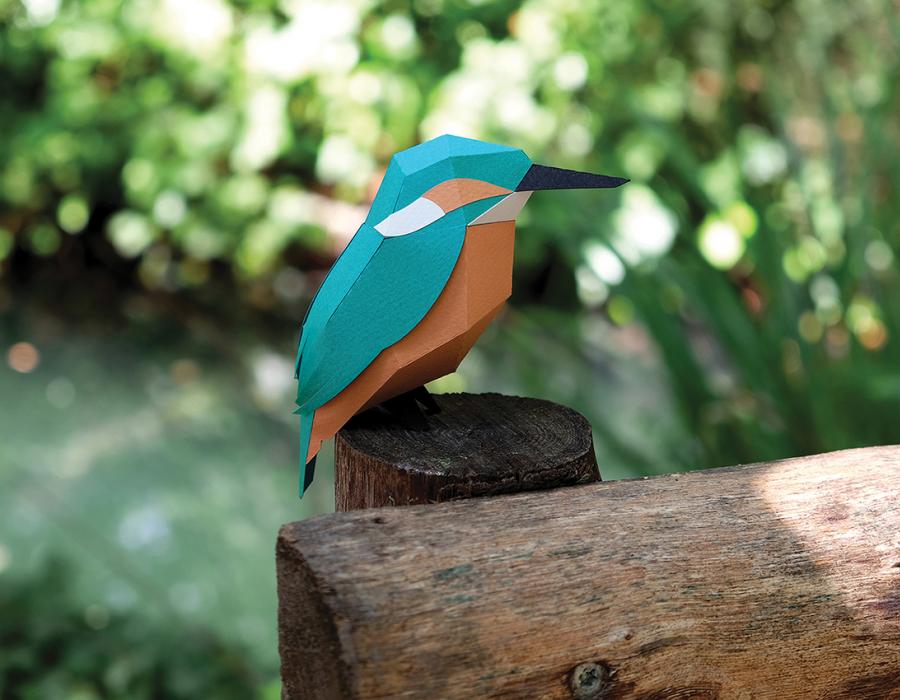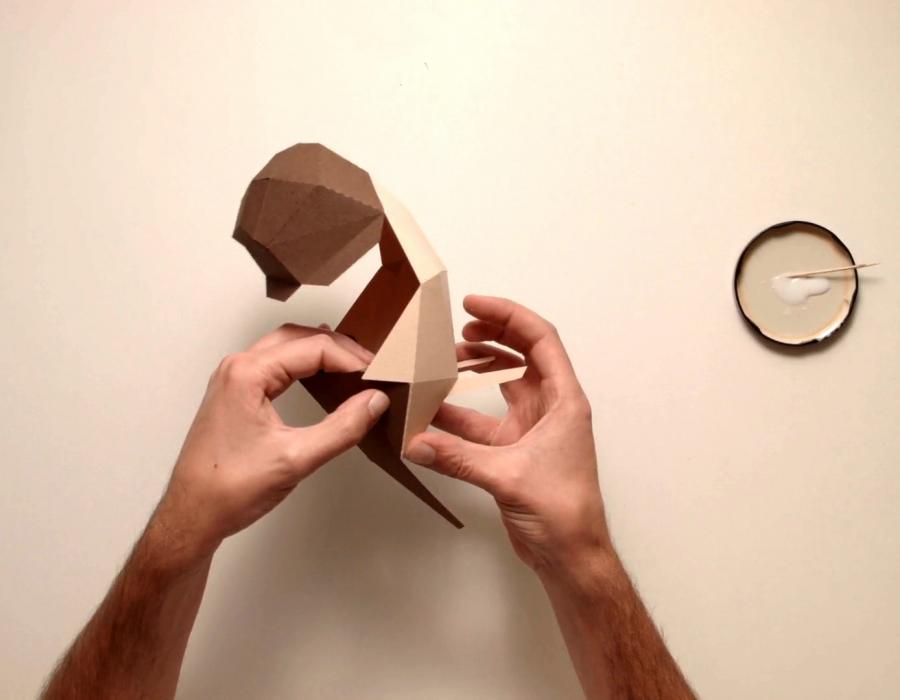
Paper can give life to all kinds of animals, thanks to its colours, finishes and the way it is processed. Therefore, that oft-repeated expression “paper is alive” makes even more sense than ever. Plego has realised this: they make different types of assemblable bird figures with paper. Moreover, they also dress shop windows, ephemeral venues, props or personalised figures for all kinds of events. As they so rightly point out, and as befits their brand, their hands fold whatever they are asked to. We talked to them to learn how they work with paper in order to breathe life into their work and what the most important factors are when they choose substrates for their creations.
What type of projects do you do at Plego and for what target or what sectors?
Plego does all kind of jobs with paper as the star, particularly collections related to the world of nature, as well as commissions for private customers or companies. Our collections are intended for lovers of beautiful things, of “do-it-yourself” (DIY), bird watchers and anyone who wants to learn something in the company of the younger members of the household.
How did the idea of Plego arise? How has it evolved?
We are two brothers who had always worked separately as professionals: Joan in graphic design and David in product design. As time went by, we realised that we wanted to join forces in order to do our own project. Our initial idea was just to enjoy ourselves doing something that we like, and over time we have managed to turn this hobby into a full-time job.

Why did you choose paper for your projects?
Because it is a material we can touch, we can play with and experiment with. And above all, it gives us the possibility of working not only in the digital world, but also on projects that begin and end in something tangible. We sort of replaced pixels and bits with scissors and cutters.
What makes paper so special for you to use it as the starting material for your creations?
Colours, grammages, textures… they are all paper-related aspects that offer a broad variety of combinations and possibilities to be able to make our creations. The possibilities of paper are infinite.
How do you work with paper until it acquires the desired form?
Up until now, we have used cuts and folds to give our ideas a form, a shape. We transform flat paper into valleys and mountains by folding and we combine a large gamut of colours to represent our birds.
To generate these projects, you need to work the paper mechanically. What does a material need to be like to withstand this type of processing?
We need premium-quality paper. Paper with sufficient consistency and rigidity to afford our representations a certain degree of solidity.

Besides these mechanical characteristics, what other aesthetic factors are important to you?
We seek collections with an extensive range of colours that afford us plenty of possibilities when we work with them. Recently, we have been considering the possibility of combining different embossed papers to give our collections greater versatility.
Do you have any preferences for colours and finishes in your papers?
The characteristics that we seek will depend on the project. For example, for our bird collection we used an organic colour palette that could be identified with each species.
Personalisation for creating unique projects is important to Guarro Casas. How do you create special jobs for your clients?
Right now, our projects revolve around papers that can give our jobs unique characteristics. This is why we try to source materials that can withstand a highly demanding level of printing and apply embossed effects that will make our products distinct and unique. Papers such as those made by Guarro Casas offer us these possibilities, with numerous resources for personalising the paper.

Many of your items, such as the paper birds, seem to create a parallel with the Guarro Casas slogan “paper is alive”, since you reproduce living creatures with this material. What does paper being alive mean to you?
We regard it as a slogan that sits well with our philosophy. Giving life to our figures is fundamental, and we try to do so based on the synthesis in the representation of the bird that we have in mind. In doing so, we obtain a minimalist figure which is also easy to put together.
What link do you think is established between paper and the senses?
At first sight, what grabs your attention most is the visual appreciation of the harmonies in colours, although the way it feels and its warmth are just as or even more important to us. Since it is a material that has to be processed, cut and folded, it has to be pleasant to touch with the fingers, while also guaranteeing the final solidity required by the figure.
How do you see paper evolving in the coming years?
While digital formats may seem to be stealing paper’s thunder as a substrate, paper will never be replaced thanks to its capacity to provide warmth and nearness. Moreover, we think that more sustainable papers with less of an impact on the environment will become increasingly more appreciated.

